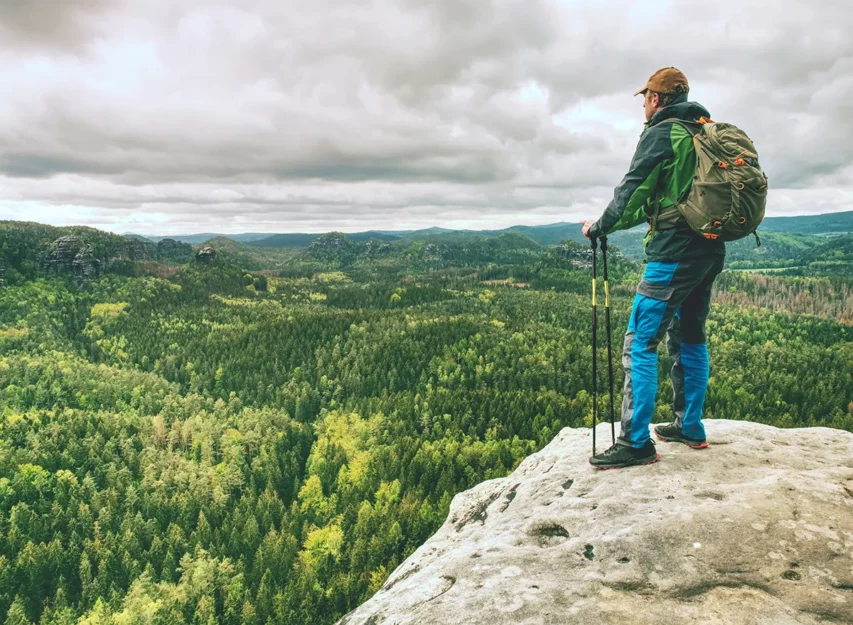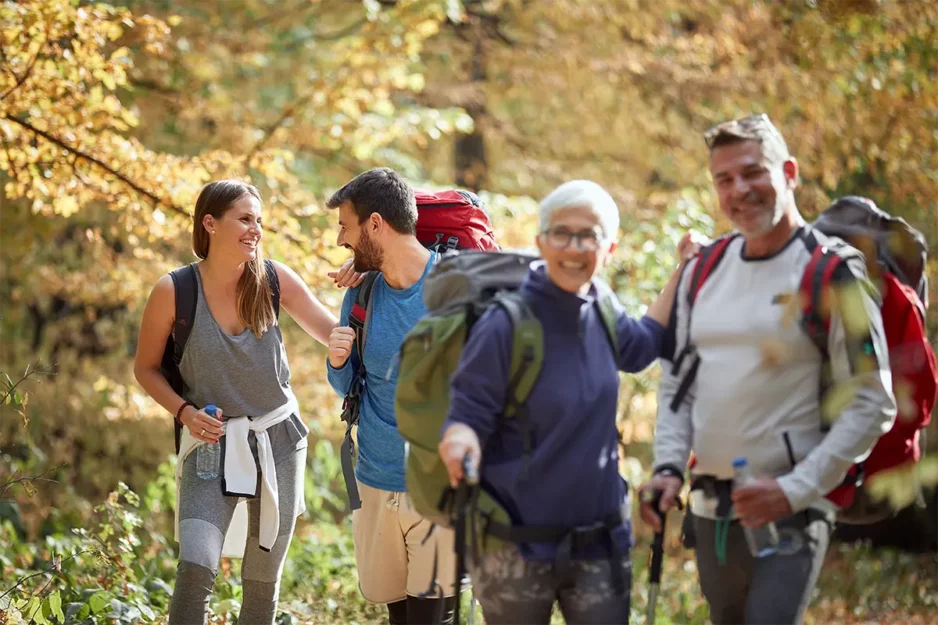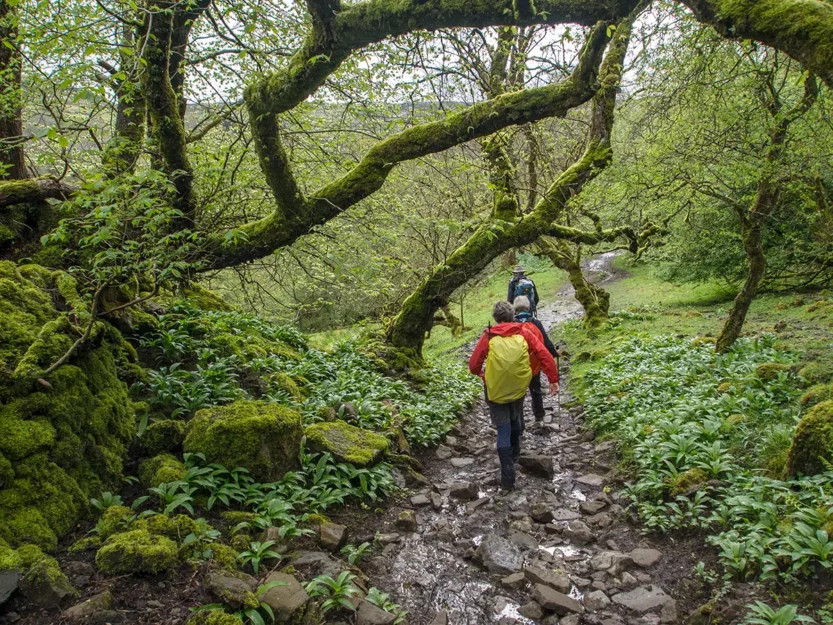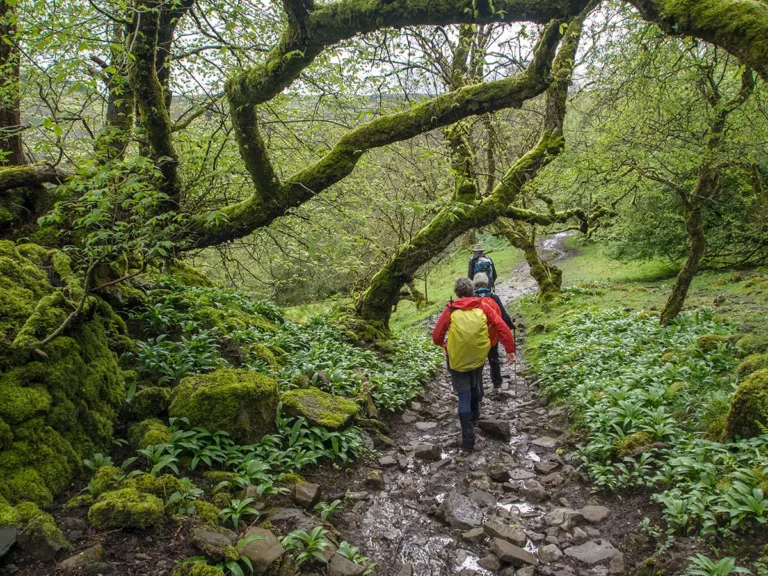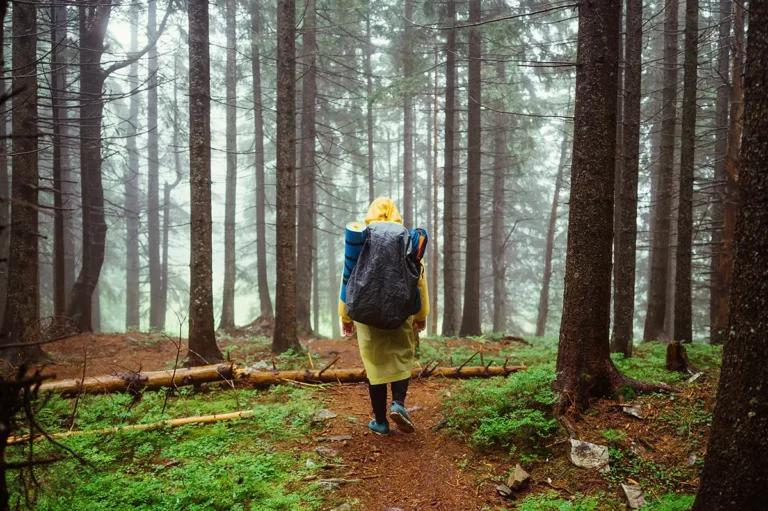Painful muscle cramps while hiking happen unexpectedly and can abruptly end a wonderful day in nature.
Knowing how to avoid cramps while hiking comes from a better understanding of your diet, water intake, and fitness level. After all, the most common causes of cramps are:
- Dehydration
- Electrolyte imbalance
- Fitness level
- Age
Preparing in advance for hiking usually means your backpack is packed, but preparedness also involves dinner the night before your hike and your Starbucks and bagel in the morning.
This article details the three factors you can control, dehydration, electrolyte imbalance, and your fitness level, to prevent and avoid muscle cramps on your next hike.
Avoiding muscle cramps while hiking
Muscle cramps have an almost endless list of causes. The reality is that knowing why you get cramps may never be known.
I suffered from awful nighttime muscle cramps my entire childhood; even as I write this, my left arm is slightly cramped — but I also know I drank more coffee than water today.
Although the direct cause of cramps is unknown, we do know dehydration and lack of electrolytes are the two primary causes of muscle cramps. And both are within your control.
During hikes, strain further increases your risk of muscle cramps. Holding a muscle in a position for a prolonged period — think ankle while ascending steep hills — or fatigued muscles from overworking can cause a muscle to cramp.
Providing your body with the fluid and nutrients it needs helps to support you during high-strain activities, reducing your risk of muscle cramps while hiking.
Hydrating before a hike
When dehydrated, our muscles can’t function at the high degree needed on a hike. When dehydration begins, the blood concentrates, causing the cardiovascular system to work harder to circulate blood.
As our bodies overwork to help blood flow, our ability to perform physical activities declines, and our muscles weaken.
Aside from healthy blood flow, water is crucial for keeping the muscles lubricated and preventing overheating.
How much water should I drink?
There’s no perfect answer for the amount of water everyone needs to drink. But there are recommended amounts. By tracking your daily water intake, you can adjust to find the perfect amount of water for your activity level.
The U.S. National Academies of Sciences, Engineering, and Medicine recommends a daily fluid intake of:
- 15.5 cups (3.7 liters) of fluids a day for men
- 11.5 cups (2.7 liters) of fluids a day for woman
Fluids include all beverages and food. Food typically makes up for 20% of fluids. Body weight and activity levels also impact fluid needs.
We all have a rough idea of how much water we drink, but have you ever counted and tracked how many cups? Many popular fitness apps like FitBit, Whoop, and iPhone’s Health app have water tracking features to help. When you wake up tomorrow, begin tracking your water intake.
By taking notes of how hydrated you feel each day, you can build data to find your water needs.
After discovering your baseline water needs, you can track and meet your water goal the day before a big hike, reducing your risk of dehydration.


Electrolytes for mineral depletion
Electrolytes are essential for muscle and cell functions. Sodium, potassium, chloride, and magnesium from food and drinks are our bodies’ most meaningful electrolytes needed to function.
If you’re suffering from cramps, it’s likely because you’re deficient in one or all of these key minerals.
The human body is a tricky balance. If you consume too many or too few electrolytes, it can hinder your performance. That’s why nutritionists recommend whole foods over supplementing.
Since our body’s balancing act isn’t challenging enough, drinking too much water can flush vital electrolytes from the body.
Potassium deficiency is the likely culprit if you’re prone to muscle cramps while hiking but confident you stay well hydrated. Focus on eating foods high in potassium, such as:
- Bananas
- Beef
- Salmon
- Chicken
- Potatoes
- Beans
- Spinach
- Cashews
- Yogurt
- Kale
- Avocado
Increasing fitness for hikes
Everyone trains for marathons, 5k’s, and tough mudders, but too many new hikers assume a hike is just a walk in the park. And it should be when you first get started.
Trails will continuously test your physical fitness levels as they become more challenging.
After 2 Tough Mudders, 3 Spartan races, and a half-marathon, the most gutted I’ve ever been was a challenging 10-mile hike.
Your first focus in training for hiking is cardio. The ability to hike for miles up and down rocky trails and mountainsides demands cardiovascular strength. Great ways to increase your cardio for hikes include:
- Trail running
- Incline treadmill
- Cross-fit
- HIIT workouts
After you’ve conquered your cardio workouts, focus on core, back, and leg strength. Leg strength is obvious as some hikes feel like one big long workout. But hiking exercises must also involve your core and lower back, especially when wearing a backpack or water pack.
These classic exercises help hikers climb hills better and persevere through rugged hikes:
- Squats
- Lunges
- Rowing
- Deadlifts
- Back extensions
- Planks
Don’t neglect your calf muscles, either. Climbing steep terrain will surprise you with sore calves in the morning.

How do you stop a leg cramp while hiking?
Your options to relieve a leg cramp are limited when on the trail. The best action is to stop hiking and rest. Overworking the muscle by continuing your hike can only make cramping worst.
Now that you’re resting, start leg stretches. The Cleveland Clinic recommends forcefully stretching the affected muscle by straightening and then flexing your foot upward. Rubbing, shaking, massaging, and gentle walking can all help alleviate cramps.
If you were at home, foam rollers are helpful for muscle cramps and pain. But you can still attempt to roll out the muscle cramp on a hike.
To create a foam roller, wrap a jacket around a thick branch or small log to apply pressure and roll on the affected muscles. A smooth river rock will work if you hike in an area without suitable trees.
While relaxing and stretching, drink plenty of fluids and eat electrolyte-replenishing snacks. Ideas for snacks to bring with you on hikes are:
- Beef jerky & meat sticks
- Trail mix
- Dried fruits
- Banana
- Peanuts
- Granola bars
- Pretzels
- Sandwich
Additional risk factors for muscle cramps
When suffering from muscle cramps outside of hiking — and electrolytes and dehydration have been ruled out — an underlying medical condition may be the cause.
Additional causes of muscle cramps include:
- Diabetes
- Pregnancy
- Kidney failure
- Spinal nerve compression (Sciatica)
- Inadequate blood supply from narrowed arteries
- Medications (Diuretics and statins)
Final thoughts
The best way to avoid muscle cramps while hiking is to drink water and eat a nutritious diet. But we’ve been told that about everything, and life isn’t that simple.
The best way to avoid muscle cramps while hiking without changing your lifestyle is to:
- Drink excess amounts of water the night before
- Eat a healthy, nutritious meal the night before
- Eat a high-sodium breakfast the morning of
- Stretch before hiking with a light warm-up
- Drink a lot of water before and during the hike
- Snack on beef jerky and trail mix while hiking
No, I didn’t forget about exercise.
Regular exercise is essential if you want to enjoy hiking. Your muscles will cramp less, and your body will suffer less. Hikes should be a challenge, but after regular exercise, you’re gifted with the opportunity to enjoy the nature around you.
Do you think you’ll be cramp free on your next hike? Share this article with others so they can avoid muscle cramps while hiking.


